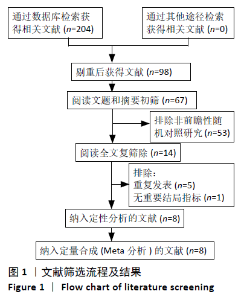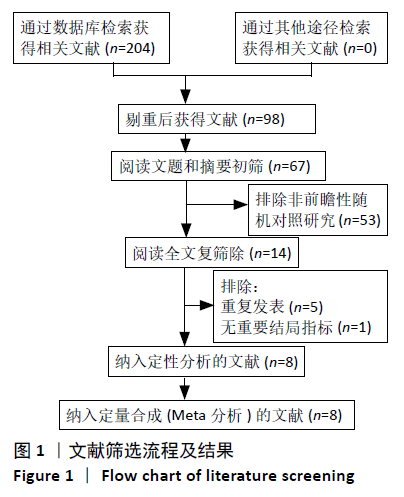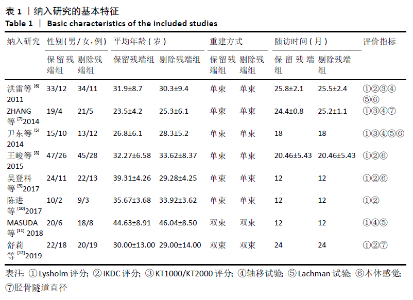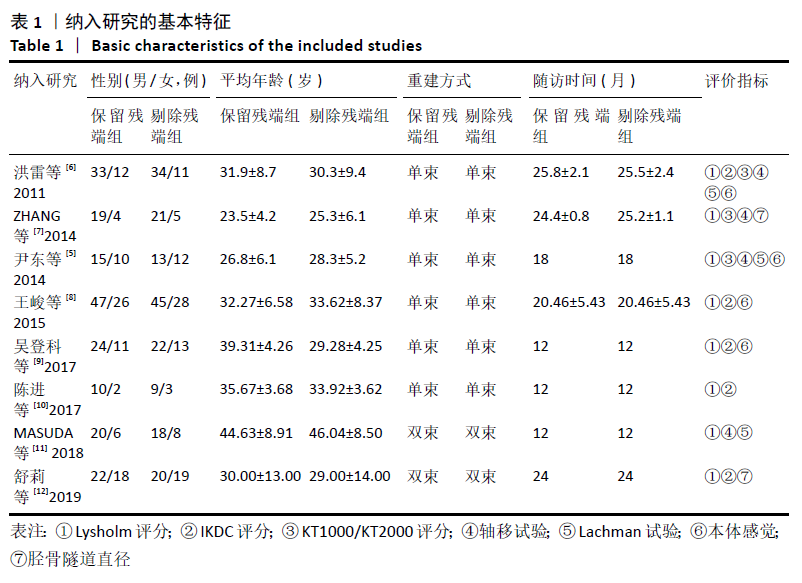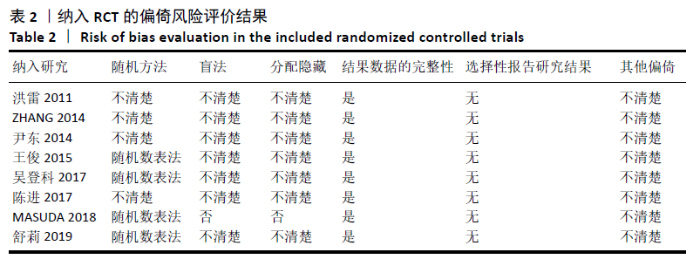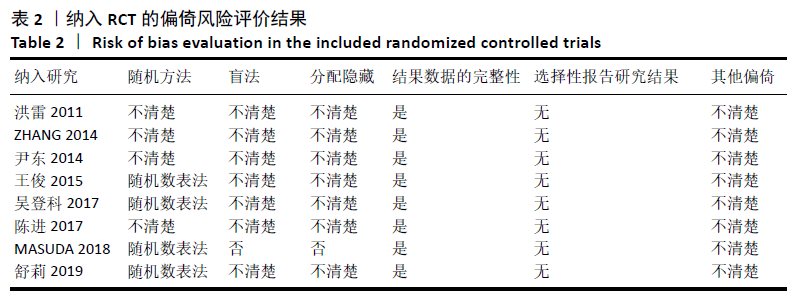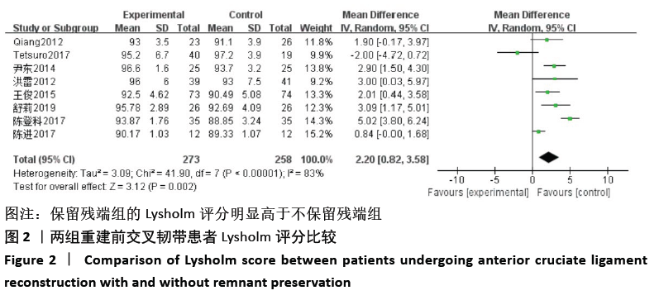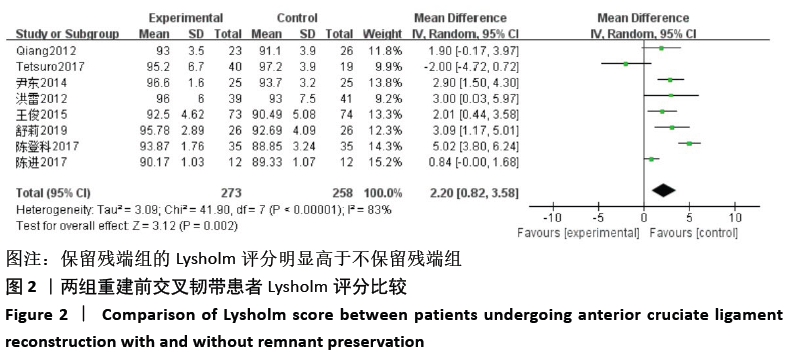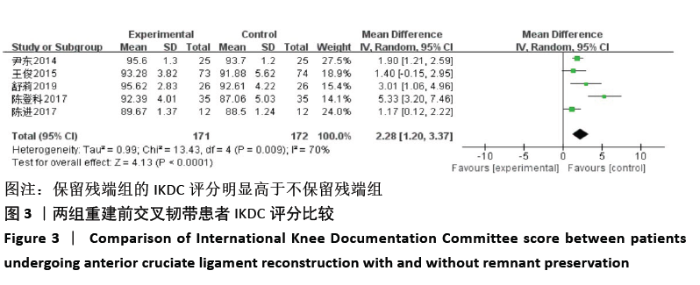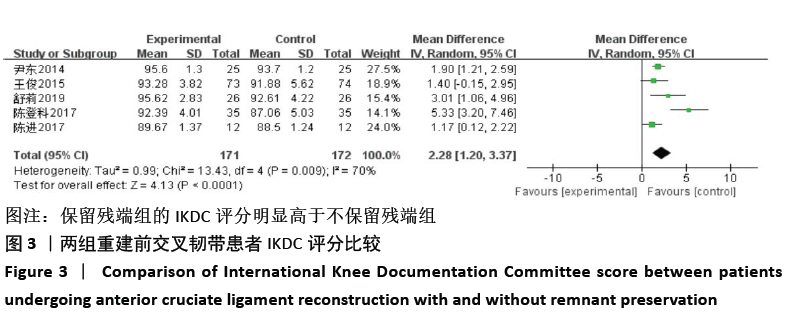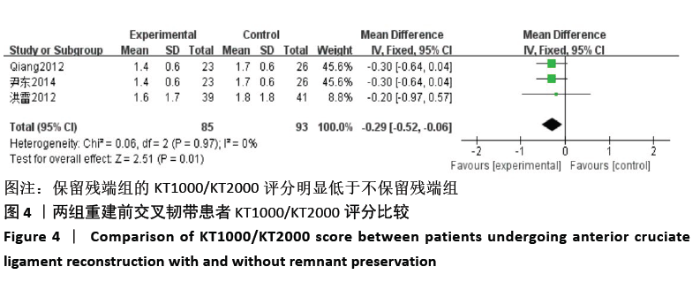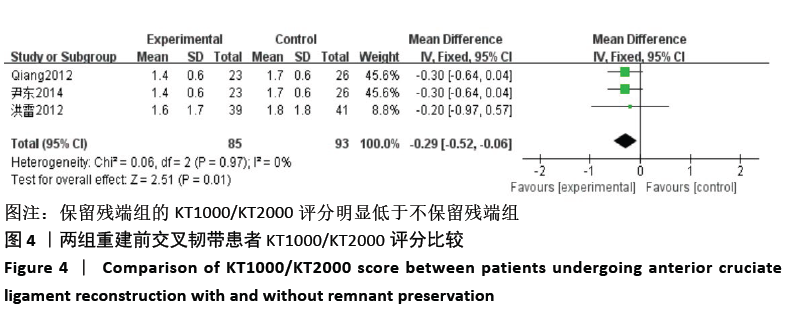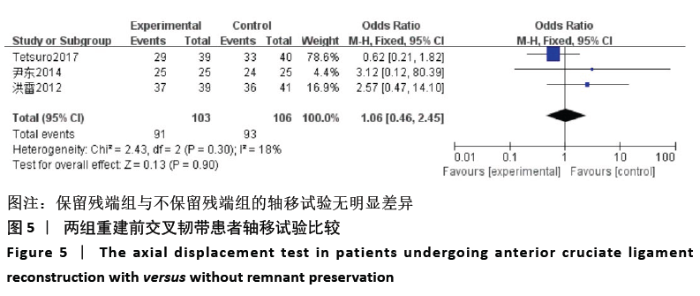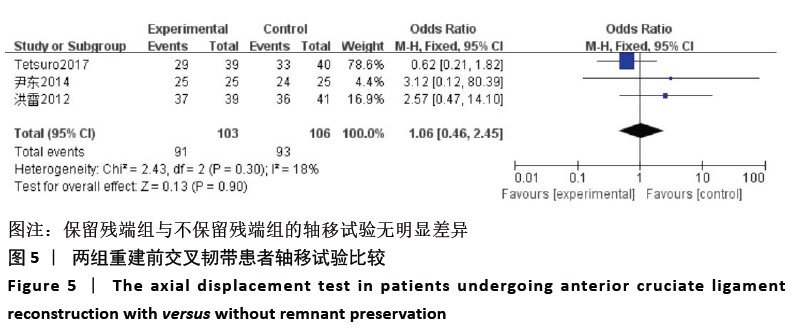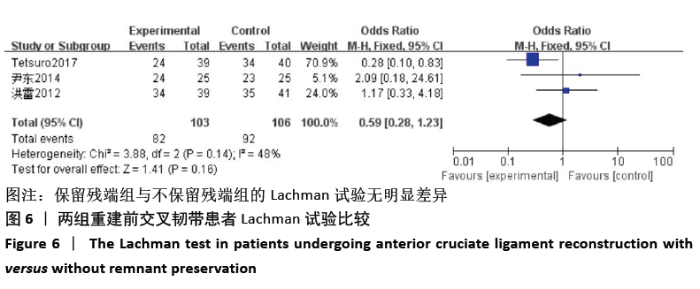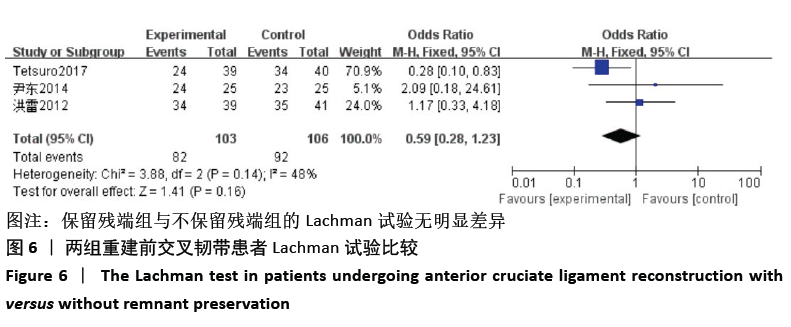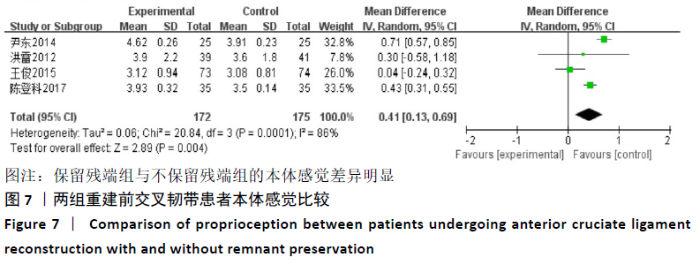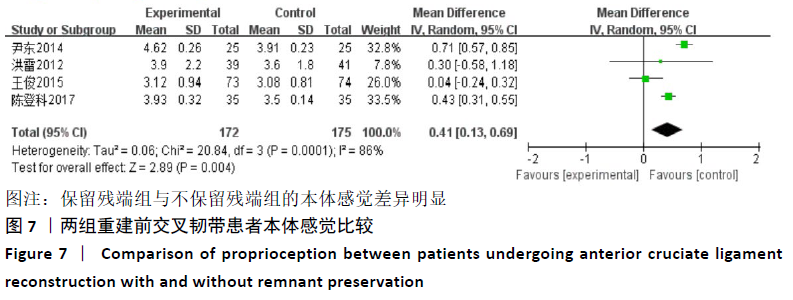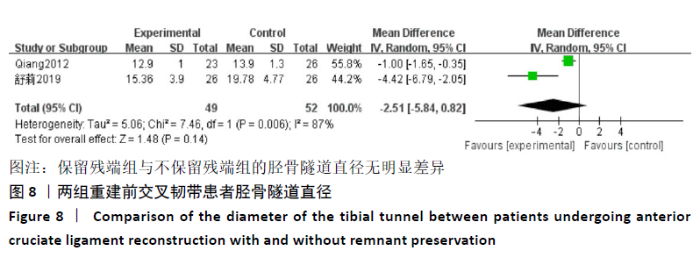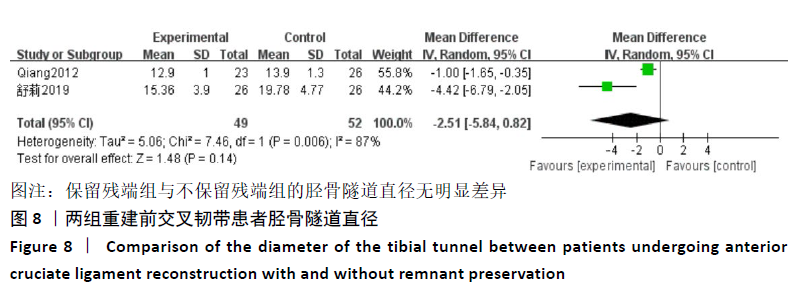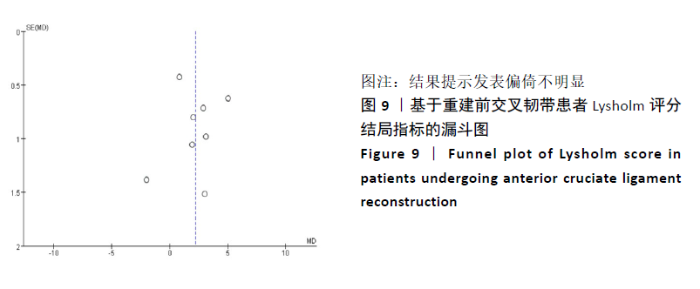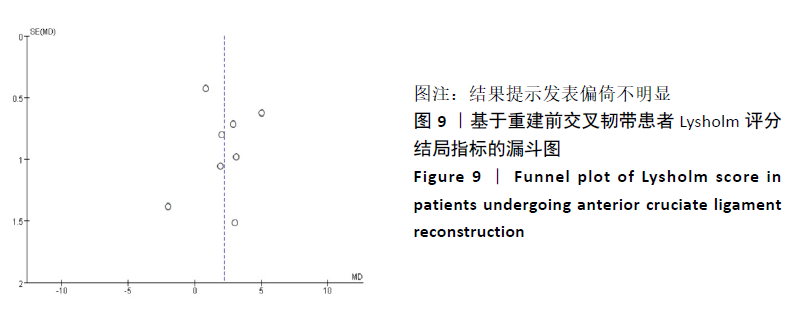[1] 张磊,谢崇新,白靖平,等.关节镜下保留残端重建前交叉韧带与不保留残端重建的Meta分析[J].中国组织工程研究, 2016,20(20):3032-3040.
[2] 杨磊波,赵晨成,张发元,等.袖套状保留残端的关节镜下前交叉韧带重建的临床效果[J].中国实用医刊,2017,44(24): 56-58.
[3] 陈哲峰,王青,郭敦明,等.前交叉韧带断裂的关节镜下保留残端重建手术治疗[J].中国矫形外科杂志,2012,20(8):693-696.
[4] 曾春,卢华定,蔡道章,等.关节镜下保留韧带残端的前交叉韧带重建[J].中华创伤骨科杂志,2010,12(4):324-328.
[5] 尹东,黄宇,孙可,等.关节镜下前交叉韧带重建保留残端的临床效果分析[J].中国内镜杂志,2014,20(9):938-942.
[6] 洪雷,李旭,王雪松,等.关节镜下保留残端重建前交叉韧带的临床前瞻性对照研究[J].中华外科杂志,2011,49(7):586-591.
[7] Zhang Q, Zhang S, Cao X, et al. The effect of remnant preservation on tibial tunnel enlargement in ACL reconstruction with hamstring autograft: a prospective randomized controlled trial. Knee Surg Sports Traumatol Arthrosc. 2014;22(1):166-173.
[8] 王峻,李雁,于腾波,等.保留与非保留残端的前交叉韧带重建:6个月随访[J].中国组织工程研究,2015,19(29):4640-4644.
[9] 吴登科,陆亚东,姜会枝,等.关节镜下前交叉韧带保留残端重建术治疗前交叉韧带损伤的效果[J].社区医学杂志, 2017(24):51-52.
[10] 陈进,王强,董利军,等.关节镜下保留前交叉韧带残端单隧道重建对手术效果的影响[J].沈阳医学院学报,2017, 19(1):21-23.
[11] Masuda T, Kondo E, Onodera J, et al. Effects of Remnant Tissue Preservation on Tunnel Enlargement After Anatomic Double-Bundle Anterior Cruciate Ligament Reconstruction Using the Hamstring Tendon. Orthop J Sports Med. 2018;6(12): 232596711881129.
[12] 舒莉,郭晓斐,柴浩,等.关节镜下残端保留在交叉韧带重建术的效果及对关节稳定性和本体感觉的影响[J].疑难病杂志,2019(3):275-279.
[13] 栾冲,张才龙,孙康,等.关节镜下LARS人工韧带与γ射线照射的同种异体肌腱重建前交叉韧带早期临床疗效比较[J].中国矫形外科杂志,2010,18(10):808-811.
[14] 王林,宋磊,韩伟峰.全膝关节置换术中后交叉韧带保留与切除与否的对比研究[J].首都医科大学学报,2017,38(6):915-918.
[15] 史俊恒,钟的桂,范智荣,等.后交叉韧带保留型假体对比后稳定型假体用于全膝关节置换的Meta分析[J].中国组织工程研究,2019,23(8):140-148.
[16] 曲铁兵,林源,潘江,等.保留后十字韧带在活动衬垫全膝假体置换术中的问题[J].中华骨科杂志,2004,24(4):234-236.
[17] Kim MK, Lee SR, Ha JK,et al. Comparison of second-look arthroscopic findings and clinical results according to the amount of preserved remnant in anterior cruciate ligament reconstruction. Knee. 2014;21(3):774-778.
[18] Lee BI, Kwon SW, Kim JB, et al. Comparison of clinical results according to amount of preserved remnant in arthroscopic anterior cruciate ligament reconstruction using quadrupled hamstring graft. Arthroscopy. 2008;24 (5):560-568.
|
